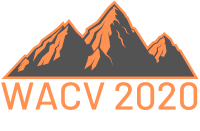-
Instance Segmentation of Benthic Scale Worms at a Hydrothermal Site
AbstractSubsea hydrothermal vents, typically existing at water depths below natural light penetration, contain diverse and unique macrofaunal environments. Traditionally, long-term ecological observation has been difficult as the extreme depth, temperature and pressure make in situ video surveys challenging. However, the introduction of subsea cabled arrays has allowed for the long time series collection of high definition imagery from these vents. To study the benthic hydrothermal vent environment, we propose an inference pipeline consisting of a U-Net followed by VGG-16 CNN to perform instance segmentation of scale worms, a specific macrofaunal family. The developed pipeline exhibits an average precision (AP) of 0.671 AP@[0.5], despite the difficult camouflaged imagery and low training data inputs. We further explore full pipeline training data requirements, as the dynamic scene in question requires the pipeline to be re-trained on an approximately monthly basis for effective segmentation. We find that the VGG-16 CNN portion of the pipeline is typically more sensitive to training data variation than the U-Net portion.
Related Material
[pdf] [video][bibtex]@InProceedings{Shashidhara_2020_WACV,
author = {Shashidhara, Bhuvan Malladihalli and Scott, Mitchell and Marburg, Aaron},
title = {Instance Segmentation of Benthic Scale Worms at a Hydrothermal Site},
booktitle = {Proceedings of the IEEE/CVF Winter Conference on Applications of Computer Vision (WACV)},
month = {March},
year = {2020}
}
These WACV 2020 papers are the Open Access versions, provided by the Computer Vision Foundation.
Except for the watermark, they are identical to the accepted versions; the final published version of the proceedings is available on IEEE Xplore.
Except for the watermark, they are identical to the accepted versions; the final published version of the proceedings is available on IEEE Xplore.
This material is presented to ensure timely dissemination of scholarly and technical work.
Copyright and all rights therein are retained by authors or by other copyright holders.
All persons copying this information are expected to adhere to the terms and constraints invoked by each author's copyright.

